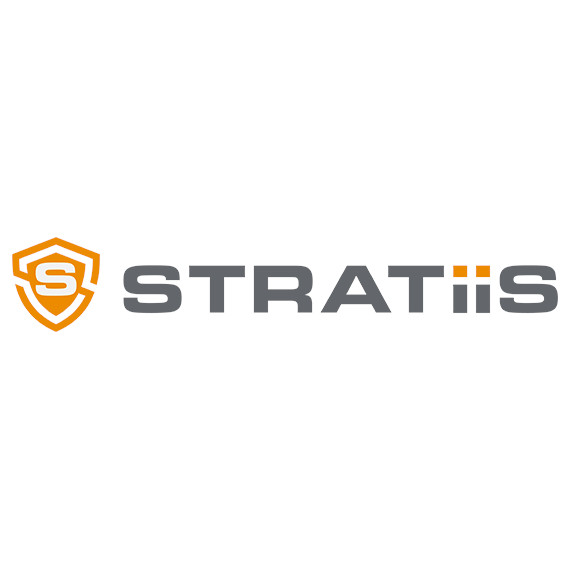
Cybersecurity is a concern for individuals and businesses of all sizes. With so much of our lives and activities taking place online, protecting personal information is essential.
One of the most fundamental components of modern digital security is a firewall, which acts as a protective barrier between a computer or a network and the internet. The firewall only allows authorised traffic to pass through, blocking everything unwanted.
In this article, we will explore what a firewall is, how it works, and why it is essential for keeping your business secure.
What is a firewall?
A firewall is a network security system that restricts access to or from a private network. Software or a combination of hardware and software blocks selective data. The goal of a firewall is to prevent unauthorised people from accessing private data.
The name firewall already gives this idea of creating a protective barrier from risk. That is exactly what a firewall provides: a way to prevent attacks and protect important data while risks aren’t under control.
Firewalls create a kind of obstruction in which potential threats are analysed. Some types of firewalls will also track web traffic and understand what has been allowed access and what has been blocked. Usually, this security system determines the extent of a private network or what devices are included in it.
How does a firewall work?
Firewalls work as a filter, deciding what can go through, what is trustworthy, and what isn’t. As we explained, the system protects networks and the devices that are part of it, known as network hosts. Hosts are connected, receiving and distributing data from inside and outside the network.
For security and privacy reasons, networks are divided into different categories and subdivisions. Understanding these categories can help us understand how a firewall works.
External public networks
They are networks designed to allow devices and systems to communicate across different locations. They are usually accessible to anyone who has the necessary credentials and equipment to connect to them. The internet, cellular networks, and satellite networks are examples of external public networks.
Internal private networks
Internal private networks are domestic networks, such as corporate intranets or other closed environments. They restrict access to outside sources and can only be accessed by authorised users who are physically connected to the network or have been granted access through secure login credentials.
Perimeter networks
Perimeter networks provide an additional layer of security to an organisation’s internal network. They create a buffer zone between the internal and external networks, such as the internet.
They are typically separated by a firewall or a security device that controls traffic and access between the two networks.
While the internal network contains core systems and data, the perimeter network will host systems that must be accessible from inside and outside the organisation. This applies to web servers, email servers, and other public-facing systems.
With a better understanding of how networks are organised and how they can be protected, we can now determine at what point a firewall will be applied.
A firewall can be applied in the perimeter network or a host. Network firewalls control de traffic from different networks, separating external and internal access. Host firewalls are put in place in individual devices or other endpoints in a private network, controlling what kind of data reaches the hardware.
Network firewalls provide a more comprehensive solution, while hot firewalls can be more personalised. Still, using both provides even more security and privacy protection.
No matter where it is placed, a firewall will control traffic following a series of rules and assessing the following parameters:
Origin
From where the access or attempt to access the network is coming from.
Destination
Where does the attempted access plan to connect?
Content
What is the access attempt trying to send to the network?
Packet and protocols
What “language” is being used to connect to the network? What are the network protocols used by the attempt to access the network?
By assessing these items, a firewall can decide if a connection attempt must be denied, reported or submitted to be accepted.
Types of Firewalls
Different types of firewalls will have a variety of filtering methods. Each type has its strengths and weaknesses, and choosing one instead of the other depends on your needs, type of connection and rules.
Stateless inspection firewall
Stateless inspection firewalls operate at the OSI network layer, using static rules to filter and control access to the network. Stateless inspections do not keep track of the state of network connections but analyse packets individually. Therefore, every time there is an attempt to connect to the network, it will be analysed again.
The rules used by this type of firewall are based on source and destination IP addresses, protocols, and ports. They do not take into account the context of the packet within the larger network communication, such as whether it is part of an established connection or a new one.
The rules are also very strict, which means they need to be continuously revised. This can be manageable in small companies but can become a problem when the network is too large.
Circuit-level gateway firewall
A circuit-level gateway firewall assesses data packets, and if they work well in a connection, it maintains that access opened, no longer assessing the connection.
Unlike packet filtering firewalls, which examine each packet individually, circuit-level gateway firewalls evaluate the overall session established between two hosts. Once the connection is established, it allows all data packets to pass through until the connection is terminated.
One of the benefits of circuit-level gateway firewalls is that they can hide the internal network structure and IP addresses from external networks, providing an extra layer of security. However, they do not provide comprehensive security, as they do not inspect the content of the packets passing through the circuit.
Stateful inspection firewall
Stateful inspection firewalls can monitor ongoing connections to the network and remember previous accesses. Similar to packet-filtering firewalls, this type of firewall assesses data based on technical information such as protocols, IP addresses, or ports. However, they also track and filter based exclusively on the state of connections.
The assessment follows a table of states, and filtering rules are updated according to registrations in the state tables made by the filtering router.
Proxy firewall
Proxy firewalls, also known as application-level firewalls, combine an application inspection with a state inspection. It inspects the content of each packet, rather than just its header information, filtering traffic based on the specific application or protocol being used. As a result, they can provide more granular control over network traffic.
Proxy firewalls are as similar to a physical protection barrier as possible, working as two additional hosts between an external network and internal devices, acting as a proxy for each network.
Next-generation firewall
Threats continue to evolve, and next-generation firewalls are prepared for what comes next, combining resources from a traditional firewall with prevention systems. They were designed to assess and identify threats such as malware.
Next-generation firewalls can provide more comprehensive protection against a wide range of threats but can be more complex and expensive to implement.
Cloud firewall
This type of firewall is deployed in the cloud and is typically used to protect cloud-based applications and services. Cloud firewalls can be managed centrally, providing scalability and flexibility that traditional hardware firewalls cannot.
Overall, the choice of firewall type depends on the specific needs of a network or organisation, including factors such as performance, security requirements, and budget.
Why are firewalls important?
Unprotected networks are vulnerable to traffic trying to access systems and data. Whether they are harmful or not, network traffic must always be inspected.
Connecting devices to IT systems or even to the internet offers a series of benefits. It makes it easier for people to work together, combine resources and foster creativity. However, connecting hosts can also require protection. Invasions, identity theft, malware and fraud are common threats people can expect when they connect their computers to a network.
Once an ill-intentioned agent finds – and accesses – your network, your devices can also be found, leading to repeating threats. If a device is constantly connected, threats are even greater.
Proactive protection is essential when it comes to a network connection. Using a firewall, users can protect themselves from risk, ensuring that systems and data are safe. Here are some of the benefits of implementing a firewall in your network:
Protection against unauthorised access
One of the primary benefits of a firewall is that it helps protect a network against unauthorised access by blocking incoming traffic from untrusted sources. This can protect sensitive data or resources on the network.
Prevention of malware
Firewalls can also help prevent malware from entering a network by blocking incoming traffic that is known to be associated with malware. This can help prevent the spread of viruses and other types of malicious software.
Network segmentation
Firewalls can be used to segment a network into multiple smaller subnets, which can help contain the spread of malware or other types of attacks. By restricting traffic between subnets, a firewall can limit the scope of a security breach.
Content filtering
Many firewalls include content filtering capabilities that allow administrators to block access to specific websites or types of content. This can be useful for enforcing company policies, preventing employees from accessing inappropriate content, or blocking access to websites known to be associated with malware.
Logging and reporting
Firewalls can generate logs that document all network traffic passing through the firewall. This can be useful for troubleshooting network issues or investigating security breaches.
Centralized management
Firewalls can be centrally managed, making it easier for administrators to implement and enforce security policies across the entire network.
Compliance with regulatory requirements
Many organisations are required to comply with various regulatory requirements related to network security. A firewall can help organisations meet these requirements by providing a layer of protection against unauthorised access and data breaches.
How to make the best out of firewall protection
Correctly setting up and maintaining firewalls are essential to protect networks and devices. Here are some tips on how to maintain the security of your firewall network:
Keep your firewalls updated
Firmware and software patches will keep firewalls up-to-date with any recent threats. For that reason, users must update their systems regularly and as soon as possible.
With individual or domestic firewalls, this is easy to do but can be more time-consuming with bigger networks. Therefore, IT departments must have a clear process in place to immediately update without problems.
Use antivirus software
Firewalls are not necessarily prepared to keep malware from infection your network. More recent threats can overcome firewall protection, and a more specific solution might be able to protect your network even further.
Limit access to ports and hosts
You can create a list of permissions or a pattern to deny entry. Limit the entry and exit connection to a list of trustworthy IP addresses and reduce access privileges to users according to their needs.
It is easier to keep the network protected by allowing users to access it when necessary.
Keep networks segmented
Limit how your internal networks communicate. Ill-intentioned agents will have a harder time gaining access to multiple internal networks, and your data will be safer.
Final thoughts
Firewalls are an essential part of IT services. As our lives and work relationships have become increasingly digital, important data is stored and exchanged through networks. Threats have also evolved and adapted to this digital environment.
Implementing systems that protect digital data and access to networks is crucial for companies but also for individuals. Firewalls offer a layer of protection, limiting access to and from different networks and keeping relevant and private data safe.



